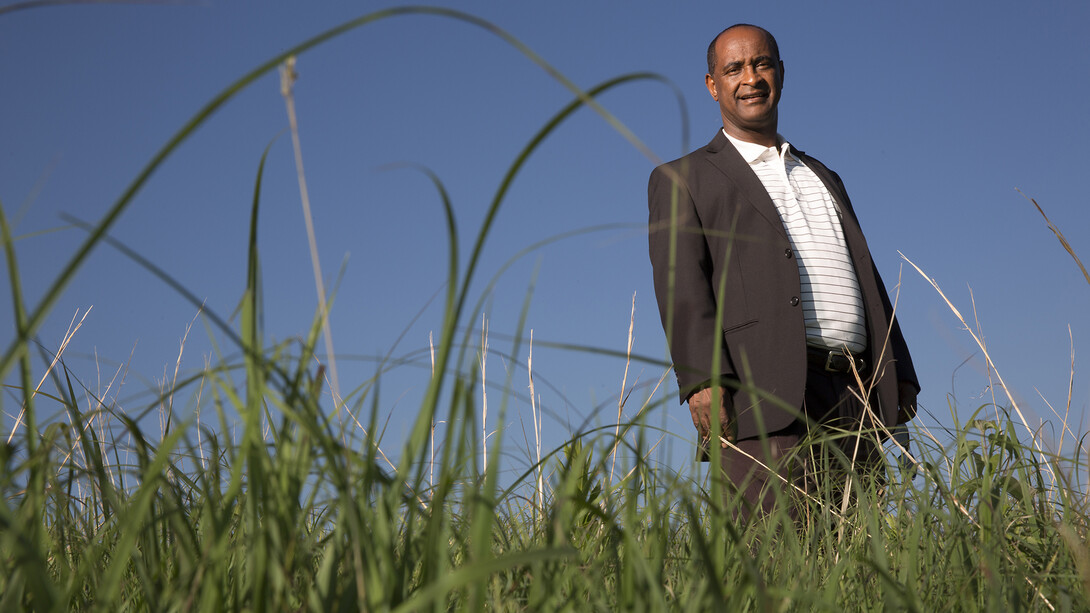
Nebraska-based drought mitigation researchers are helping African leaders develop plans to combat future drought events.
Initial steps were taken in August as Tsegaye Tadesse, a climatologist with the Nebraska-based National Drought Mitigation Center, attended the African Drought Conference in Windhoek, Namibia. The goal of the conference was to develop a drought risk management strategy for all of Africa, a continent nearly 3.5 times larger than the United States. Such a strategy will enhance each country’s resilience to drought impacts.
“It is ambitious,” said Tadesse, who is also a research associate professor in the survey division of the University of Nebraska–Lincoln’s School of Natural Resources. “But you have to start somewhere – 10,000 steps start with just one.”
The conference helped propelled African leaders into taking the first step. There, Tadesse presented a proposal on a drought risk management framework, “Drought Resilient and Prepared Africa,” which builds on the long legacy of international drought risk management work by National Drought Mitigation Center faculty — which includes current director Mark Svoboda, Cody Knutson and Michael Hayes, and center founder Don Wilhite.
The proposal was revised and approved by the ministers of all participating African countries over the five-day conference.
In the past, Tadesse said, many African countries have not placed a “proper priority” on drought risk management, and respond via crisis-management measures. However, recent research and climate data are helping push leaders toward adopting a proactive, preventative approach.
Growing evidence indicates droughts in Africa are likely to become more frequent and last longer as a result of climate change, leaving severe economic and social damage in their wake, Tadesse said. Most recently, the United Nations Office for the Coordination of Humanitarian Affairs reported in July that that more than 30 million people in Africa were affected by severe El Niño-linked drought impacts in 2016. Southern African was especially hard hit, experiencing the driest growing season in 35 years with thousands dying due to food scarcity.
Tadesse said the recent events reflect the need for adopting drought management plans.
“Each country needs a drought policy and a commitment to a drought policy,” Tadesse said. “While each country in Africa has the primary responsibility for managing and reducing drought risk, it is a shared responsibility between African governments and relevant stakeholders, scientific institutions and the private sector, as well as UN agencies.”
To help countries create their short-, medium- and long-term drought mitigation plans, a drought task force has to be created, Tadesse said.
The African Union Commission and United Nations agencies plan to help fund the creation of plans for the poorer countries in Africa.
“The African Union and delegates want to do the next step as soon as possible to keep the momentum going,” Tadesse said. “Within a couple of years, they want to have an overarching drought policy and implementation plan for Africa.”
Political will and commitment are important to making the drought plans a reality, Tadesse said. And, he is hopeful that the majority of African countries will continue to be supportive of the effort.
“The president of Namibia, Dr. Hage Geingob was there while I was presenting the DRAPA proposal at the African Drought Conference,” Tadesse said. “I think he is committed to the issue, and that is really good. We have to try and move the needle and having his commitment to the issue will set a good example for other countries in Africa.”
Flexibility within the plans will be key to their success.
“These plans need to be proactive and dynamic and should be revised for each country based on resources, culture and indigenous knowledge,” Tadesse said. “Conditions change. We want each country to review their policy every five years, to look at what worked and what didn’t work, and then make significant changes if needed.”
The “Drought Resilient and Prepared Africa” framework incorporates the approach promoted by the Integrated Drought Management Program that highlights the development of national drought policies based on the three pillars of drought risk management:
drought monitoring and early warning;
drought vulnerability and risk assessment; and
drought preparedness, mitigation and response.
Tadesse further emphasized three specific elements in the framework:
policies and governance for drought risk management;
drought awareness and knowledge management; and
reducing underlying factors of drought risk.
If done appropriately, drought plans can help reduce impacts to people and property, but also strengthen the ties between the countries of Africa while reducing the monetary cost of drought recovery.
“Each country in Africa has a stake in this,” Tadesse said. “Having a drought plan is not just an advantage for an individual country. It also is a benefit to the entire continent.”
This work ties in closely with other recent work by the university in the Middle East and North Africa region. The drought center and the Robert B. Daugherty Water for Food Global Institute are also working together with the Dubai-based International Center for Biosaline Agriculture to help the region balance water consumption and increase agricultural productivity, with a focus on drought management.
For more information about the Nebraska-based National Drought Mitigation Center and its efforts, click here.







